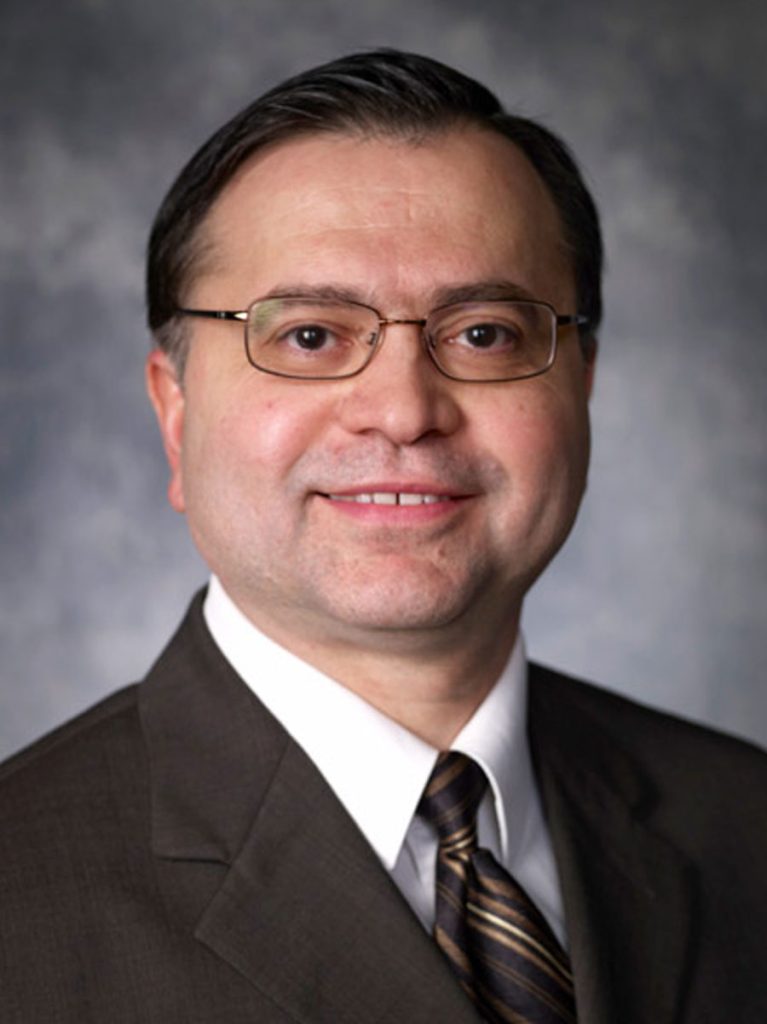
Dr. Naofal Al-Dhahir
Erik Jonsson Distinguished Professor of Electrical Engineering
Department of Electrical and Computer Engineering Associate Head for Undergraduate Education
Career Highlights
Member of European Academy of Arts and Sciences, 2023
2022 IEEE Communications Society RCC Technical Recognition Award
Fellow of the Asia Pacific Artificial Intelligence Association
The Qualcomm Faculty Award, 2021
Fellow of the National Academy of Inventors, 2020
2019 IEEE Signal Processing and Computing for Communications Award
Institute of Electrical and Electronics Engineers (IEEE) Fellow, 2008
Co-recipient of the 2006 IEEE Donald G. Fink Prize Paper Award
Co-holder of 43 U.S. patents
Center Affiliation: Texas Analog Center of Excellence (TxACE)
Research Interests
Wireless localization, machine and deep learning applications, smart grid, physical layer security
h-index = 59, with 16,900 citations, according to Google Scholar
Publications
Doppler Applications in LEO Satellite Communication Systems (2002)
Over 500 journal and conference papers
Editor-in-Chief for IEEE Transactions on Communications, January 2016 to December 2019
Education
MSc in Electrical Engineering, Stanford University
PhD in Electrical Engineering, Stanford University
Wireless Communications Expert Receives Two Top International Awards, Fellowship
Dr. Naofal Al-Dhahir, the Erik Jonsson Distinguished Professor of electrical and computer engineering at The University of Texas at Dallas, has been elected as a member of the European Academy of Sciences and Arts (EASA).
The academy is limited to just 2,000 members across the globe, including 35 Nobel Prize winners, who are nominated by other EASA members and elected for their outstanding contributions in science, arts and governance. The organization aims to offer critical expertise by studying societal changes and related ethical issues, building transnational collaboration and strengthening the role of scientific communities. Al-Dhahir, who is associate head of electrical and computer engineering for undergraduate education in the Erik Jonsson School of Engineering and Computer Science, was inducted at an April 2023 ceremony in Salzburg, Austria.
In addition, Al-Dhahir recently was elected as a fellow of the Asia-Pacific Artificial Intelligence Association. He also received the 2022 Technical Recognition Award from the Radio Communications Committee (RCC) of the International Electrical and Electronics Engineers (IEEE) Communications Society. The award recognizes society members who have made outstanding contributions to the technological advancement of radio communications.
“I’m honored to receive these three recognitions. It is truly humbling that previous winners of the RCC award include pioneers who introduced me to radio communications through their graduate courses at Stanford University,” Al-Dhahir said.
Al-Dhahir’s research focuses on wireless communications, localization and sensing. Al-Dhahir, holder of 43 U.S. patents and co-recipient of five IEEE Best Paper Awards, is a fellow of the National Academy of Inventors and of the IEEE. He also received the 2019 IEEE Signal Processing and Computing for Communications Technical Recognition Award.
Al-Dhahir has advised 16 PhD students who are now technical leaders at major companies including Apple Inc., Qualcomm, Samsung Electronics Co., Amazon.com Inc. and MediaTek Inc. During his career, he has developed efficient algorithms to mitigate interference for multiuser, multicarrier and multi-antenna communication systems. He also designed the optimum channel shortening equalizer, which decreases the lag time between when a signal is sent and when it arrives and is used in every asymmetric digital subscriber line (ADSL) modem.
Al-Dhahir holds master’s and doctoral degrees from Stanford University, where he studied under Dr. John Cioffi, Hitachi America Professor in the School of Engineering, Emeritus, who is widely known as the “Father of DSL.” Before joining UT Dallas, Al-Dhahir worked at AT&T Inc. and GE Research labs for nine years where he received multiple awards for his inventions.